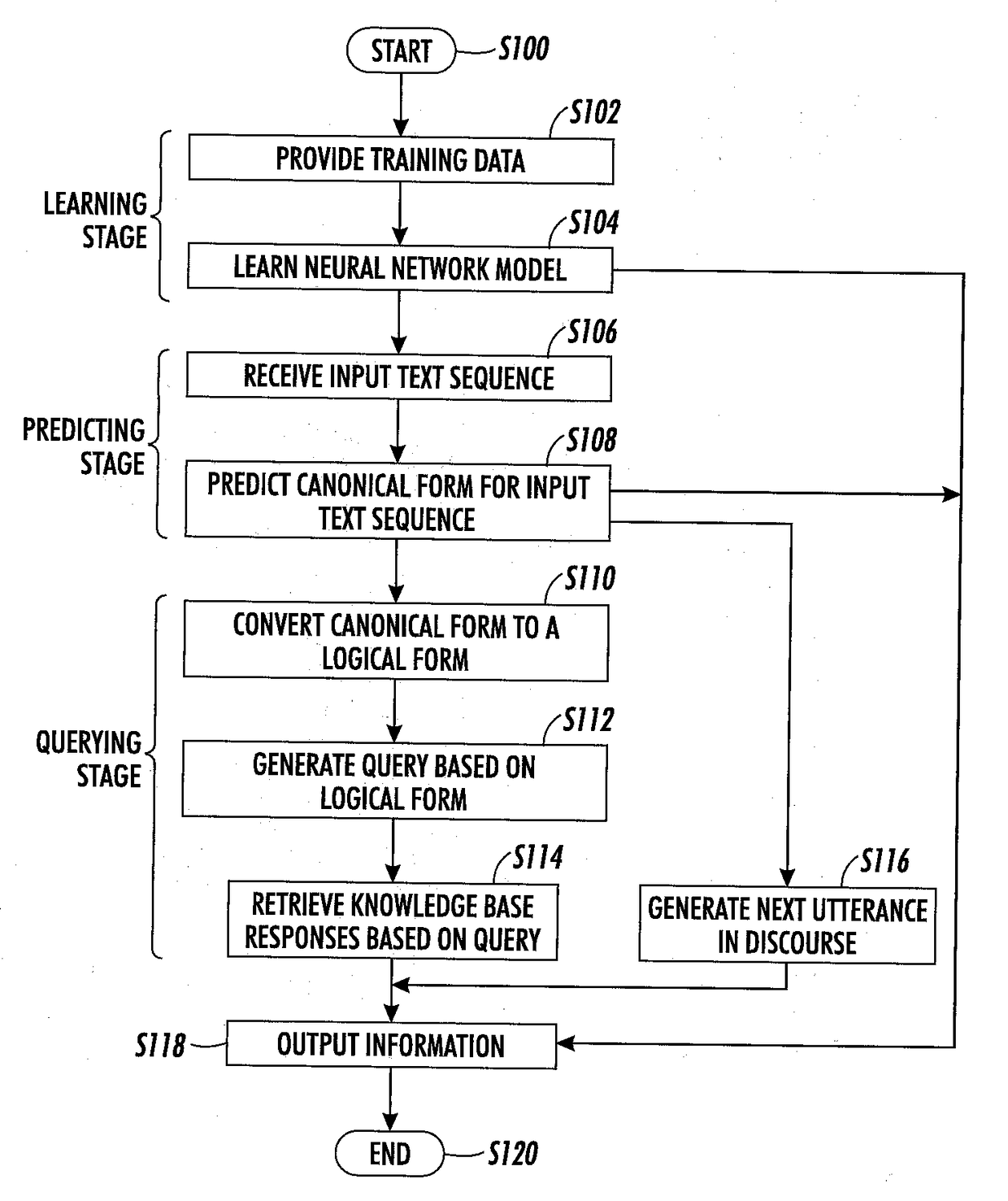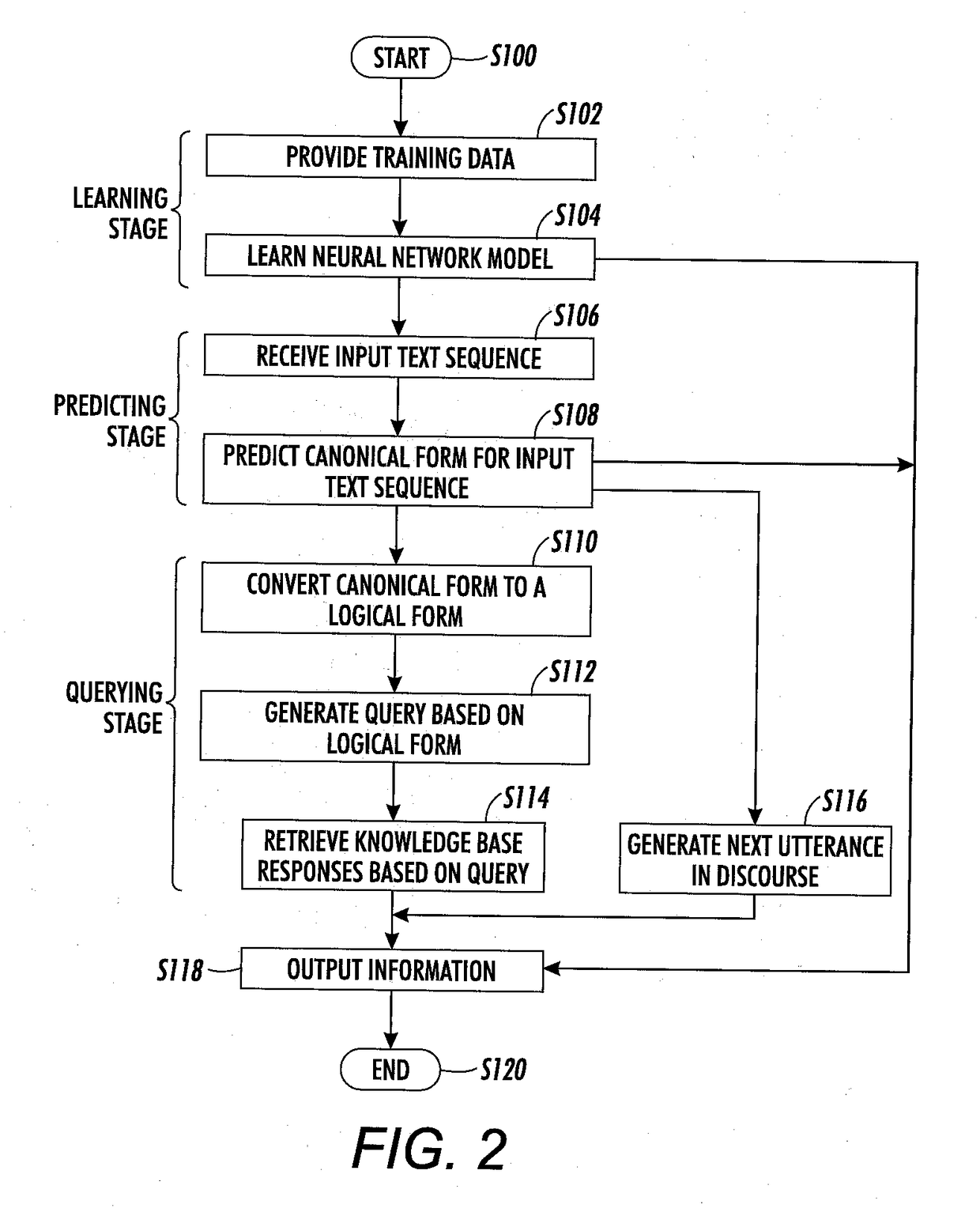Semantic parsing using deep neural networks for predicting canonical forms
a deep neural network and semantic parsing technology, applied in the field of natural language understanding, can solve the problems of low oracle accuracy, low and low overall performance of the spo method
- Summary
- Abstract
- Description
- Claims
- Application Information
AI Technical Summary
Benefits of technology
Problems solved by technology
Method used
Image
Examples
examples
[0090]The OVERNIGHT dataset of paraphrases developed by the method of Wang 2015 was used to conduct the experiments. The OVERNIGHT dataset is available at https: / / github.com / percyliang / sempre and includes paraphrases generated from a seed lexicon, using crowdsourcing. This dataset contains various domains focusing on different linguistic phenomena such as multi-arity relations, sublexical compositionality, and the like. The utterance in each domain is annotated with both logical forms and canonical forms. The number of such utterances varies from 800 to 4000, depending on the domain.
[0091]TABLE 1 shows some example pairs of such natural utterances NL and their canonical form CF taken from the OVERNIGHT dataset.
TABLE 1Example pairs of Natural Language Utterancesand Respective Canonical FormsNL: “find the people who joined their studies before alice was born”CF: “student whose start date is at most birthdate of alice”NL: “what recipe can be prepped in less time thanrice pudding can be...
PUM
 Login to View More
Login to View More Abstract
Description
Claims
Application Information
 Login to View More
Login to View More - R&D
- Intellectual Property
- Life Sciences
- Materials
- Tech Scout
- Unparalleled Data Quality
- Higher Quality Content
- 60% Fewer Hallucinations
Browse by: Latest US Patents, China's latest patents, Technical Efficacy Thesaurus, Application Domain, Technology Topic, Popular Technical Reports.
© 2025 PatSnap. All rights reserved.Legal|Privacy policy|Modern Slavery Act Transparency Statement|Sitemap|About US| Contact US: help@patsnap.com



